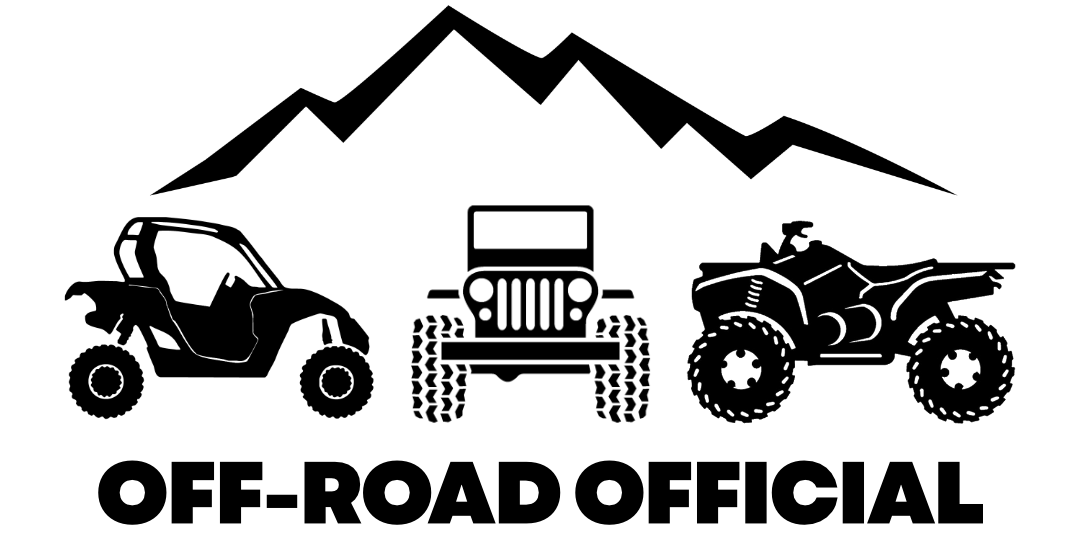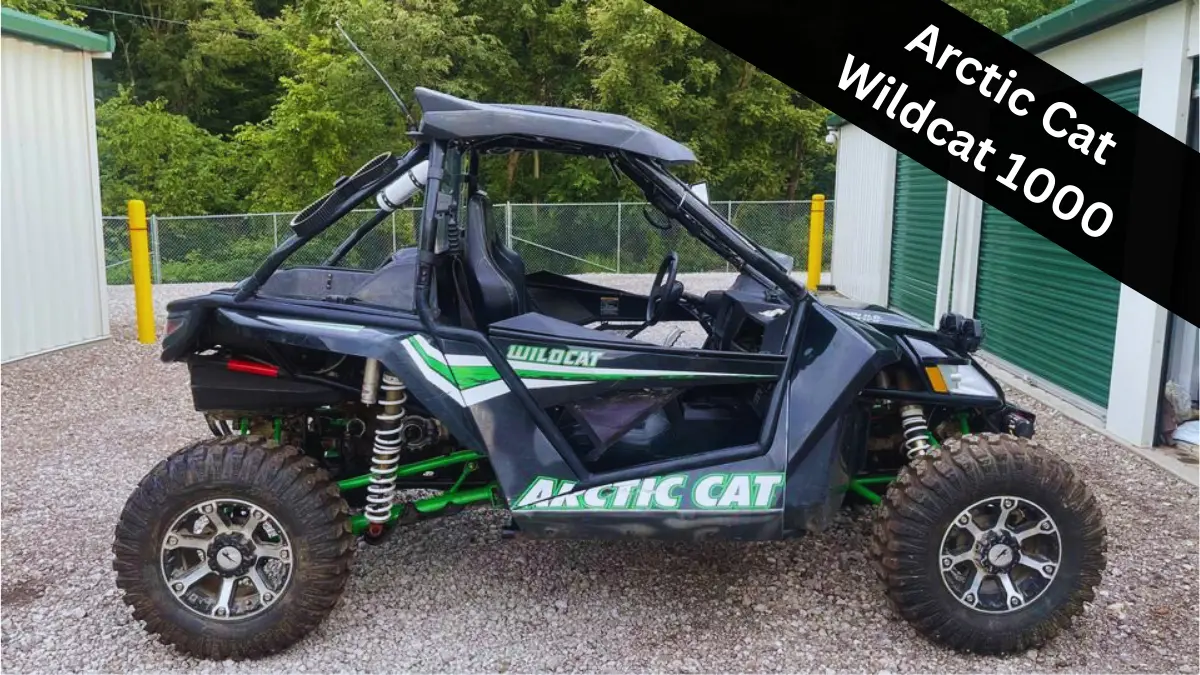The Arctic Cat Wildcat 1000 was one of the most thrilling and capable off-road vehicles ever built when it got its start in 2012.
Made right here in the United States in the arctic-like state of Minnesota, it’s one of the better pure sport recreational off-road vehicles to ever ride the trails.
That said, this model does have its strengths and weaknesses.
And it underwent a series of upgrades during its production run, resulting in some years being better than others.
This guide will offer a full overview of the Arctic Cat Wildcat 1000, including:
- Top speed
- Key specs, features, and performance
- Which years are better than others and why
- Main pros and cons
Arctic Cat Wildcat 1000 Top Speed
Despite an engine loaded with torque and horsepower, the Wildcat 1000 is not the fastest off-road vehicle you’ll find.
The Arctic Cat Wildcat 1000 top speed is around 70 mph, so it won’t quite keep up with some of the faster sport models like the Polaris RZR 1000 or the Can Am Maverick.
But in terms of acceleration, it will hold its own with some of the quickest models around.
Specs, Key Features, & Performance
Engine
The Wildcat 1000 is powered by a 951 cc V-Twin engine with a maximum power output of around 90 horsepower.
This is the same engine used in the Arctic Cat Prowler XTZ, and it packs some serious punch.
It is loaded with low-end torque and horsepower, giving it awesome acceleration and plenty of grunt.
The engine is located mid-chassis rather than in the rear like many other models, which helps to make it more stable and cuts down on the noise in the cab area.
With all this power, the Wildcat makes light work of any and all conditions and terrain – from rain and snow to mud and sand.
| Engine Type | Four-Stroke, SOCH, 4-valve |
| Cylinder Arrangement | Twin Cylinder |
| Displacement | 951 cc |
| Max Horsepower | 90 HP |
| Bore x Stroke Ratio | 92 x 71.6 mm |
| Carburetion System | EFI |
| Engine Cooling | Liquid-Cooled |
| Fuel Capacity | 8.8 Gallons |
Drivetrain
The engine is mated to a Duramatic automatic CVT transmission, which powers the driveshaft.
This Duramatic transmission is specific to Arctic Cat, and actually makes use of two clutches.
While other clutch systems make use of a primary and secondary set of clutch pulleys, the Duramatic transmission features a second clutch which is always engaged.
This set-up helps limit belt slippage and excessive heat on the belt, which prolongs its lifespan.
The Duramatic transmission also provides smoother engagement and makes the power easier to control in the lower RPM ranges.
The gear shift is mounted on the center console and offers both Low and High gears along with Park, Reverse, and Neutral settings.
Riders can choose between two-wheel and four-wheel drive, with an optional front locking differential for better traction.
| Drive System | Shaft Drive w/ Selectable 2WD/4WD And Front Locking Differential |
| Transmission Type | Duramatic CVT |
| Gear Shift Pattern | P-R-N-L-H |
Suspension
One of the best features of the Wildcat 1000 is its long travel suspension system.
In front there’s a double A-Arm suspension that boasts a whopping 17 inches of travel, which was tops in the industry until the Polaris RZR 1000 overtook it recently.
The rear suspension is what was an industry-first 5-point multi link trailing arm suspension with 18 inches of travel.
This is one of the most aggressive suspension combos in the industry, with the Wildcat seemingly floating through the toughest terrain.

The Walker Evans shocks are designed for off-road riding and offer 17-position compression dampening, dual-rate springs, and are preload adjustable giving riders various settings to accommodate specific riding styles and terrains.
One of the longest wheelbases in the off-road industry also helps the Wildcat 1000 to soak up harsh terrain like many others cannot.
And with 13 inches of ground clearance, it’s pretty uncommon to bottom this vehicle out unless you’re taking on some pretty extreme rocks or downed trees.
Even so, a full-length underbody skid plate has your back if you cut it a little too close.
This suspension system sits atop a full-perimeter frame constructed of High Strength Low Alloy steel that offers some of the best strength and durability you’ll find.
| Frame Type | Steel / Aluminum |
| Wheelbase | 95 inches |
| Ground Clearance | 13 inches |
| Front Suspension | Independent Double A-Arm w/ preload adjustable shocks |
| Rear Suspension | 5-Link Trailing Arm w/ preload adjustable shocks |
| Wheel Travel | Front – 17 inches, Rear – 18 inches |
Tires & Brakes
The Wildcat 1000 is equipped with 26-inch tires in the front and back.
These Duro Kaden tires were developed specifically for this model and use an extended tread pattern to improve traction and stability while cornering and taking on rough terrain.
Four-wheel hydraulic disc brakes offer plenty of stopping power in all conditions and terrains.
| Front Tires | 26 x 9-14 (Duro) |
| Rear Tires | 26 x 11-14 (Duro) |
| Wheels | Aluminum |
| Front Brake Type | Hydraulic Disc |
| Rear Brake Type | Hydraulic Disc |
Dimensions & Capacities
The Wildcat 1000 is one of the bigger two-seaters you’ll find from an overall dimensions perspective.
Its 64-inch width is a bit of a drawback for those who trail ride tighter trails, but if it can fit it performs incredibly well.
But this width gives it excellent stability, making the chances of a rollover in this machine minimal unless you’re really testing it.
It also features a rear bed box to carry gear or cargo in, with a capacity of up to 300 lbs.
| Length | 120 in |
| Width | 64 in |
| Height | 65.8 in |
| Dry Weight | 1,305 lbs |
| Payload Capacity | 740 lbs |
| Bed Box Dimensions | 35.8 x 21 x 8.4 in |
| Bed Box Capacity | 300 lbs |
Ergonomics
The interior cab area of the Wildcat 1000 is designed for visibility, control, and overall comfort.
The tube-frame doors with nets latch in the front and swing open from the front, making it easy to slide in and out of the seats.
And an adjustable tilt steering wheel gives riders of all builds their preferred steering stance.
The seats are contoured, high-back bucket seats with upper body supports that help to keep riders in place and really make riding comfortable and provide good stability in all terrains.
While some owners do choose to upgrade to aftermarket suspension seats, the stock seats aren’t that far off in terms of overall comfort.
One drawback is that the 3-point seatbelts just aren’t quite sufficient for the type of rough riding the Wildcat 1000 is capable of.
You’ll be better off from a safety and stability standpoint adding a harness bar and harnesses in their place.
A digital/analog round gauge is located mid-dash and displays your fuel level, odometer, speedometer, gear position, battery condition, clock and the outdoor temperature among others.

Changes By Year
While Arctic Cat made minor improvements to the Wildcat 1000 each year after its inception, there were some notable changes that really differentiate the model by year.
2013 Arctic Cat Wildcat 1000 & Earlier
As some of the first models released, the 2013 and earlier Wildcat 1000’s helped to highlight some of the common issues with this newer model and Arctic Cat made an effort to work out the kinks in future models.
While high quality models overall, some of the noted drawbacks of these models are:
- The lower A-Arm and top trailing arm of the suspension system were weak and made the ride a little stiff.
- The brakes were known to be a bit squishy with riders needing to exert more force than usual.
- The turning radius was not overly impressive.
2014 Arctic Cat Wildcat
The 2014 Arctic Cat Wildcat 1000 saw the following upgrades over previous models:
- Better SLD (spike load dampener)
- Better lower A-Arm
- Better top trailing arm
- Upgraded front differential
- Upgraded rear drive shaft
- Better lower case half
- Upgraded brakes
- Tighter turning radius
2015 Arctic Cat Wildcat
The 2015 Arctic Cat Wildcat 1000 also saw some upgrades from the 2015 model:
- The addition of a closed loop fuel system makes these models run better.
- The power steering was upgraded, offering easier turning and even better turning radius.
- An upgraded muffler was added which led to the machines sounding better.
- Updated starter parts are better than those of the 2015 and prior.
The changes stopped here as the models that followed were all identical until phased out shortly thereafter.
Pros & Cons
Owner reviews are mixed on this model, which is to be expected with folks being more likely to voice their frustrations about being unhappy than those who are content with their machines.
Here are the main pros and cons as identified across owner reviews:
Pros
- Impressive engine power capable of taking these models anywhere you want to go.
- Very well built, with the durability to stand up to the abuses of any type of off-road riding for years.
- The suspension system is one of the best in the industry, offering an ultra smooth ride and plenty of adjustability.
- These vehicles are very stable and hard to roll with their extra wide stance.
- Full length skid plates underneath offer protection from obstacles.
- Though bigger machines, the power steering makes handling easy, even in 4WD.
Cons
- The stock starter in these machines is known to be weak and kick out alignment, leading to it grinding the teeth off the starter and stripping the starter gears. This usually results in a broken starter case but can lead to more serious issues.
- The steering slider and bushings are prone to wearing out and failing, leading to the power steering failing and the need for replacements.
- The stock seat belts don’t offer quite enough stability for rough riding and should be replaced by harnesses.
- The stock roll cage is adequate, but does not stand up all that well to rolling over time and may need to be replaced.
- The seats are not adjustable like some competitors’ are.
- The AC hose clamps are not high quality and should be replaced.
You can read more detail on some of these issues in this guide to common problems found in the Arctic Cat Wildcat 1000.
Conclusion
While Arctic Cat and its competitors have released a number of more modern models in recent years that may well be superior to the Arctic Cat Wildcat 1000, these models still make for some of the best off-road sport vehicles you’ll find.
For a look at similar models, check out the following guides before you go:


